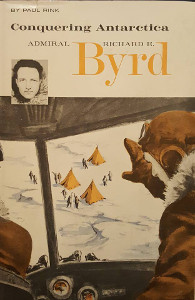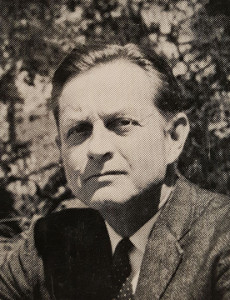Conquering Antarctica: Admiral Richard E. Byrd

Author:
Paul Rink
Illustrator:
Robert Boehmer
Publication:
1961 by Encyclopædia Britannica Press
Genre:
Biography, Non-fiction
Series:
Britannica Bookshelf: Great Lives for Young Americans / Compton Bookshelf: Great Lives / Bookshelf for Young Americans ![]() Members Only
Members Only
Pages:
190
Current state:
This book has been evaluated and information added. It has not been read and content considerations may not be complete.
Book Guide
Search for this book used on:
The life of Admiral Richard E. Byrd was one of constant adventure. When he was only twelve years old, he made a trip around the world by himself. In 1926, he navigated the first plane to fly over the North Pole and was awarded the Congressional Medal of Honor for the achievement. The following year, the same year the Lindbergh made his historic crossing of the Atlantic, Byrd and three companions flew a multiple-engined plane across the Atlantic carrying the first trans-oceanic air mail, and a freight load of 800 pounds.
In 1928 Byrd organized and arranged the financing for his first expedition to the Antarctic. He risked his own capital, the donations of contributors, and his future earnings from writing and lecturing on this expensive venture into the unknown.
The purpose of the expediton, Byrd announced, was to gather information about the forbidding unexplored ice continent. Most of the men selected for the expedition were scientists-meteorologists, geologists, botanists, zoologists, and experts in other fields. They would have to live in close quarters under the ice for months. They would have to take with them all the equipment and supplies they would need for more than a year. Once the Antarctic night came, they could not expect supplies from the outside.
The brief, cold Antarctic summer was just beginning when Byrd and forty-two carefully selected men established Little America on Antarctica, in December of 1928. It was a race against time to get the base established under the ice before winter closed in. The following spring, November of 1929, Byrd and three other men took off from Little America in a clumsy Ford tri-motor plane, and flew over the South Pole. They almost crashed into the ragged face of a glacier of their plane struggled to gain altitude.
Five years after the first expedition, Byrd returned to Little America with a fifty-six man party. He spent a long polar winter in a tiny hut at Bolling Advanced Base, 123 miles south of the main base. Poisonous fumes from a stove nearly killed him. Sick, dazed, and weakened, he struggled to remain alive in his isolated hut-knowing no help could reach him for months. Desperately, he radioed messages of hope back to the base at Little America. Byrd knew that if his companions at Little America found out he was sick, they would try to rescue him and would perish in the fearful Antarctic night.
The story of the man behind the expedition is equally as exciting as the adventure itself. Byrd's courage and determination to survive at Advance Base make this a tremendous tale of personal bravery.
From the dust jacket
To view an example page please sign in.
Content Guide
Please sign in to access all of the topics associated with this book and view other books with the same topics.
Please sign in to access the locations this book takes place in and view other books in the same location.
Please sign in to access the time periods this book takes place in and view other books in the same time period.
For information about the lead characters please sign in.
Find This Book
Search for this book used on:




